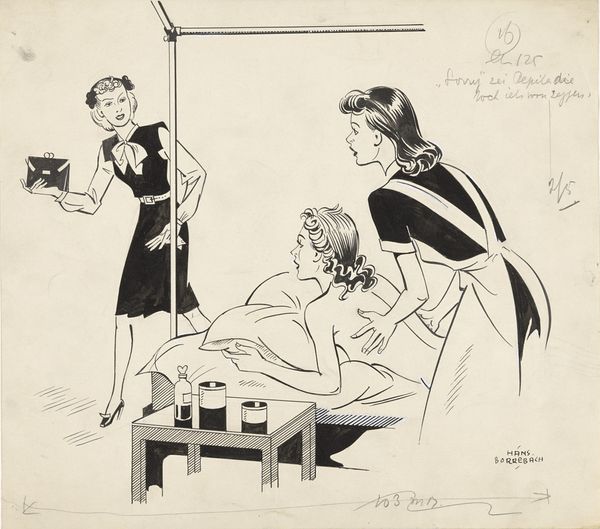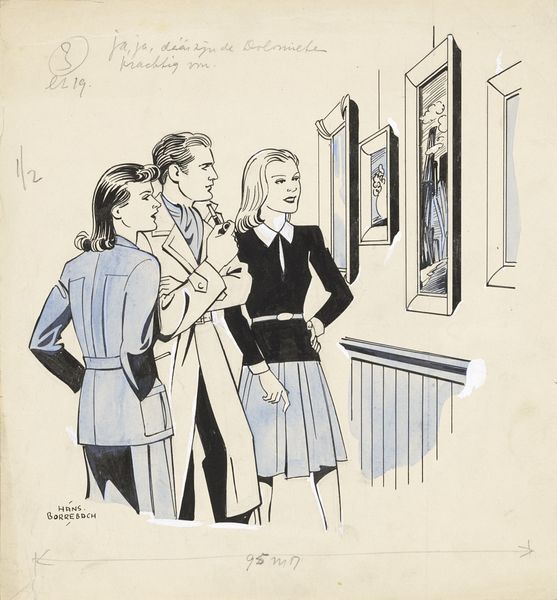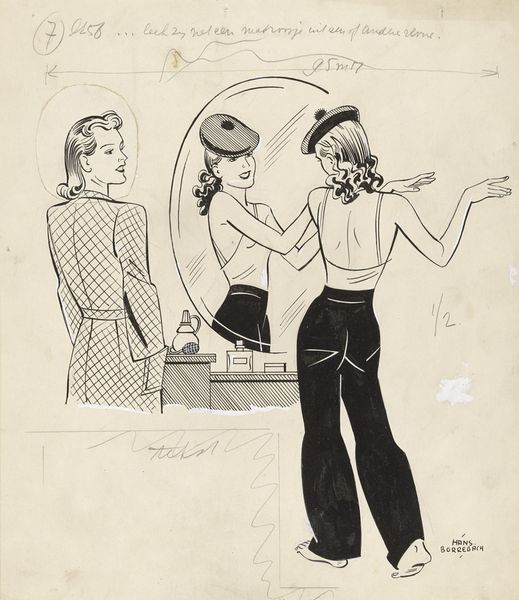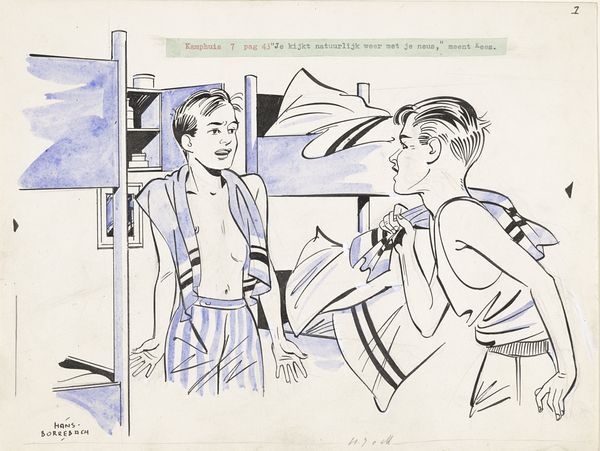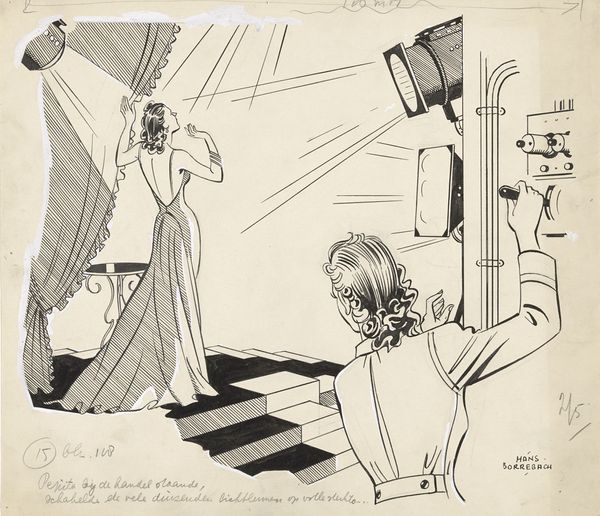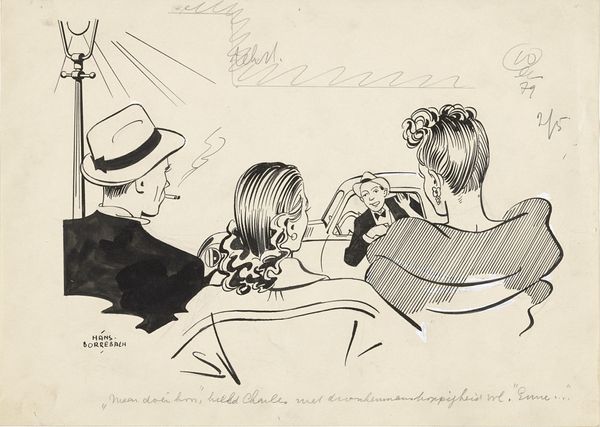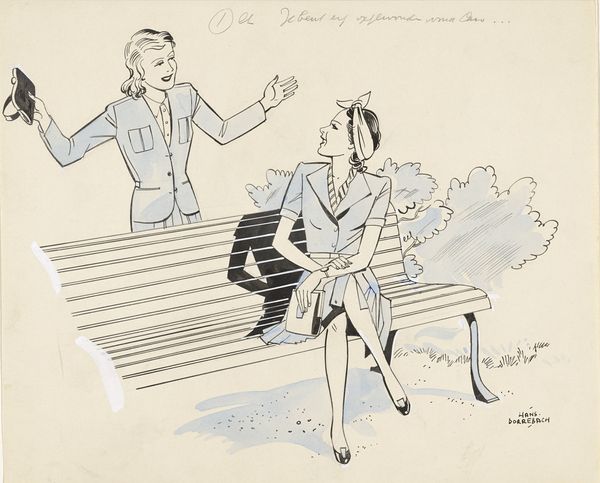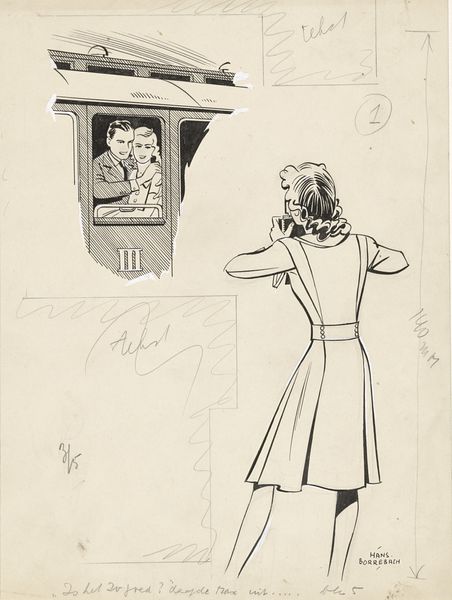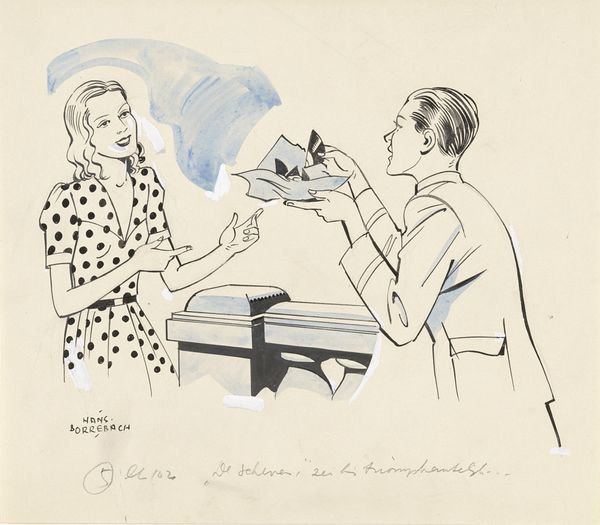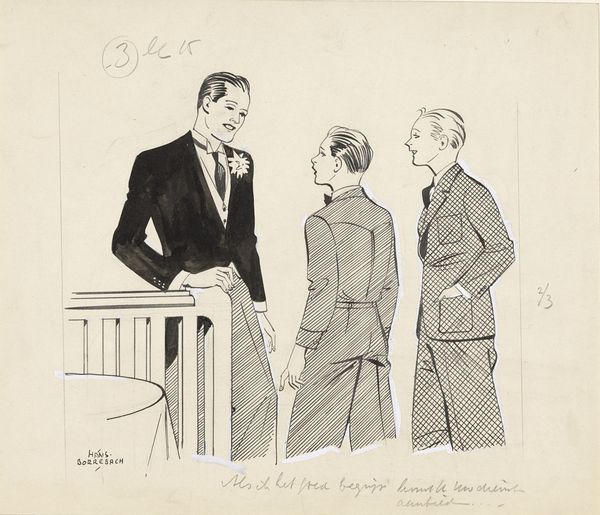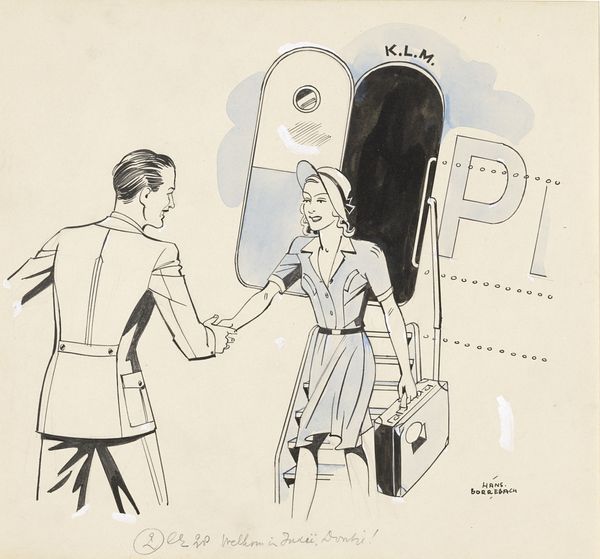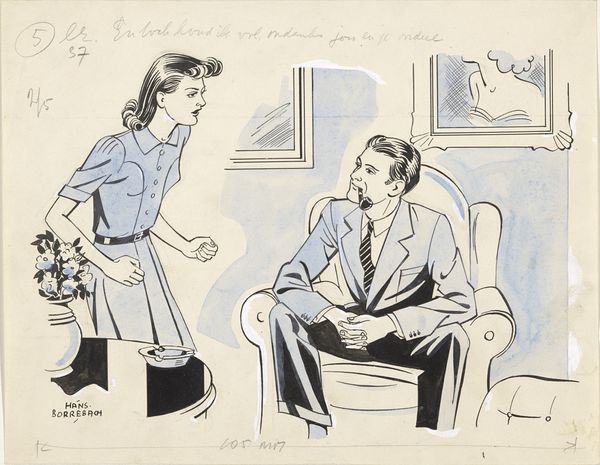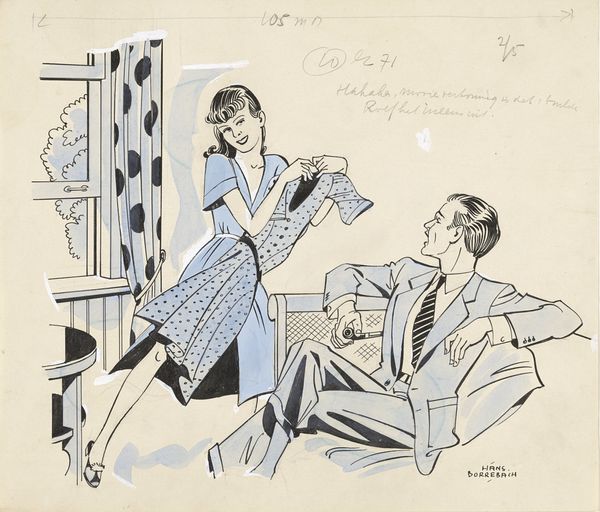
drawing, paper, pen
#
portrait
#
drawing
#
comic strip sketch
#
imaginative character sketch
#
quirky sketch
#
cartoon sketch
#
paper
#
personal sketchbook
#
idea generation sketch
#
sketchwork
#
sketchbook drawing
#
pen
#
storyboard and sketchbook work
#
sketchbook art
Dimensions: height 227 mm, width 262 mm
Copyright: Rijks Museum: Open Domain
Editor: So, here we have a drawing by Hans Borrebach called "Rolf toont Lony en een vrouw de achterzijde van een papier," dating from before 1954. It looks like a pen drawing on paper depicting three figures in what seems to be an artist's studio. The man, presumably Rolf, is holding up a blank sheet of paper, obscuring something, while two women look on. The blank paper kind of creates a barrier. What's your take on this? Curator: This piece raises interesting questions about the social context of art creation. The performative aspect of displaying or concealing the artwork behind a literal "blank page". Who are these figures, and what are their power dynamics? Is Rolf, by controlling the access to the 'real' image, asserting dominance? Also, is that his model, who is behind an easel, with palette in hand? Is that a work in progress behind her, and can that impact his presentation? Editor: That’s a really interesting angle about power! I was just thinking it could be about the creative process itself – showing the blank canvas before the art. But the idea of control definitely adds another layer. Curator: Consider the role of museums and galleries during the mid-20th century, when this work was created. There was this ongoing tension between democratizing art and maintaining an elite gatekeeping. Could this sketch be a commentary on who gets to see what, and who controls the narrative around art? Perhaps Borrebach is questioning that accessibility through his sketchbook? Editor: That’s fascinating. So, it’s not just about what’s on the paper, but also who decides its value and its audience. Curator: Precisely! The piece invites us to analyze the socio-political forces at play in the art world and question how these forces shape our understanding and appreciation of art. Editor: Wow, I initially saw it as a simple studio scene, but now I see all these hidden layers of social commentary. I’ll never look at a blank canvas the same way again. Curator: Exactly! That's the beauty of analyzing art through a historical and institutional lens—it transforms our perception.
Comments
No comments
Be the first to comment and join the conversation on the ultimate creative platform.
